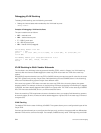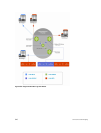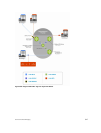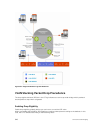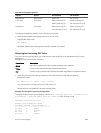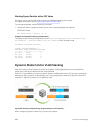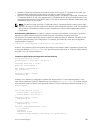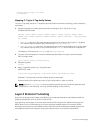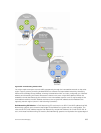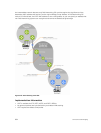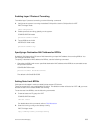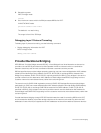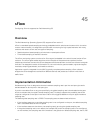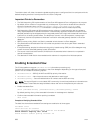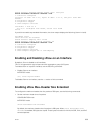
service-policy input in layer2
no shutdown
Mapping C-Tag to S-Tag dot1p Values
To map C-Tag dot1p values to S-Tag dot1p values and mark the frames accordingly, use the following
commands.
1. Allocate CAM space to enable queuing frames according to the C-Tag or the S-Tag.
CONFIGURATION mode
cam-acl l2acl number ipv4acl number ipv6acl number ipv4qos number l2qos
number l2pt number ipmacacl number ecfmacl number {vman-qos | vman-qos-dual-
fp} number
• vman-qos: mark the S-Tag dot1p and queue the frame according to the original C-Tag dot1p.
This method requires half as many CAM entries as vman-qos-dual-fp.
• vman-qos-dual-fp: mark the S-Tag dot1p and queue the frame according to the S-Tag dot1p.
This method requires twice as many CAM entries as vman-qos and FP blocks in multiples of 2.
The default is: 0 FP blocks for vman-qos and vman-qos-dual-fp.
2. The new CAM configuration is stored in NVRAM and takes effect only after a save and reload.
EXEC Privilege mode
copy running-config startup-config
3. Reload the system.
reload
4. Map C-Tag dot1p values to a S-Tag dot1p value.
INTERFACE mode
vlan-stack dot1p-mapping c-tag-dot1p values sp-tag-dot1p value
Separate C-Tag values by commas. Dashed ranges are permitted.
Dynamic Mode CoS overrides any Layer 2 QoS configuration in case of conflicts.
NOTE: Because dot1p-mapping marks and queues packets, the only remaining applicable QoS
configuration is rate metering. You may use Rate Shaping or Rate Policing.
Layer 2 Protocol Tunneling
Spanning tree bridge protocol data units (BPDUs) use a reserved destination MAC address called the
bridge group address, which is 01-80-C2-00-00-00.
Only spanning-tree bridges on the local area network (LAN) recognize this address and process the
BPDU. When you use VLAN stacking to connect physically separate regions of a network, BPDUs
attempting to traverse the intermediate network might be consumed and later dropped because the
intermediate network itself might be using spanning tree (shown in the following illustration).
852
Service Provider Bridging



